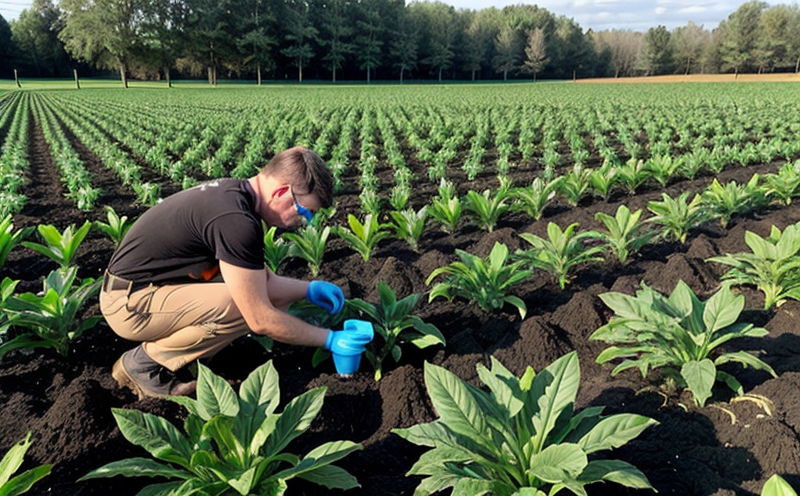Fertilizer & Nutrient Content Testing
The testing of fertilizer and nutrient content is a critical process within the agriculture and forestry sectors. Accurate analysis ensures that crops receive the right balance of essential nutrients, leading to healthier plants, higher yields, and more sustainable farming practices. This service involves several key steps, from sample preparation to final reporting.
The testing typically adheres to international standards such as ISO 17025 for laboratory competence, ensuring reliability and accuracy. The process begins with the collection of representative samples from various batches or fields. These samples are then prepared in strict adherence to procedural guidelines. Once prepared, they undergo a series of chemical analyses designed to measure specific nutrient contents like nitrogen (N), phosphorus (P), potassium (K), calcium (Ca), magnesium (Mg), sulfur (S), and trace elements.
The analytical methods used vary based on the type of fertilizer and its intended use. Common techniques include atomic absorption spectrophotometry, inductively coupled plasma optical emission spectroscopy (ICP-OES), and gas chromatography mass spectrometry (GC-MS). Each method provides precise measurements that are essential for understanding nutrient availability.
After analysis, detailed reports are generated. These documents include not only the measured nutrient contents but also recommendations tailored to specific crop types and growing conditions. The results help farmers optimize their fertilization practices, reducing unnecessary waste and environmental impact while enhancing productivity.
The importance of accurate nutrient content testing cannot be overstated. Inefficient use of fertilizers can lead to reduced yields, increased costs, and potential environmental hazards such as water pollution from excess nutrients leaching into groundwater. By providing precise data, this service supports sustainable agricultural practices that benefit both the environment and economic efficiency.
Real-World Applications
In practice, fertilizer testing is used across various crops including maize, wheat, rice, and vegetables. For instance, in maize farming, nitrogen content plays a crucial role in stalk strength and grain quality. Accurate testing ensures that the correct amount of nitrogen is applied, preventing deficiencies or excesses that could harm plant health.
- Improved Crop Yield: Ensures optimal nutrient levels leading to higher and more consistent crop yields.
- Better Resource Management: Helps in efficient use of fertilizers, reducing waste and unnecessary costs.
Why It Matters
The importance of fertilizer and nutrient content testing extends beyond just enhancing agricultural productivity; it has significant implications for environmental sustainability. By ensuring that the correct amounts of nutrients are applied, this service helps minimize the risk of nutrient runoff into water bodies, which can lead to eutrophication and harm aquatic ecosystems.
Moreover, accurate testing supports precision agriculture practices, allowing farmers to tailor their fertilization strategies based on soil conditions and crop needs. This not only improves efficiency but also contributes to more sustainable farming methods. The service is aligned with global initiatives aimed at promoting sustainable development goals (SDGs), particularly those related to responsible resource management.
- Environmental Protection: Reduces the risk of nutrient pollution, supporting cleaner water and healthier ecosystems.
- Sustainable Farming: Enhances precision agriculture practices, optimizing resource use and reducing environmental impact.





